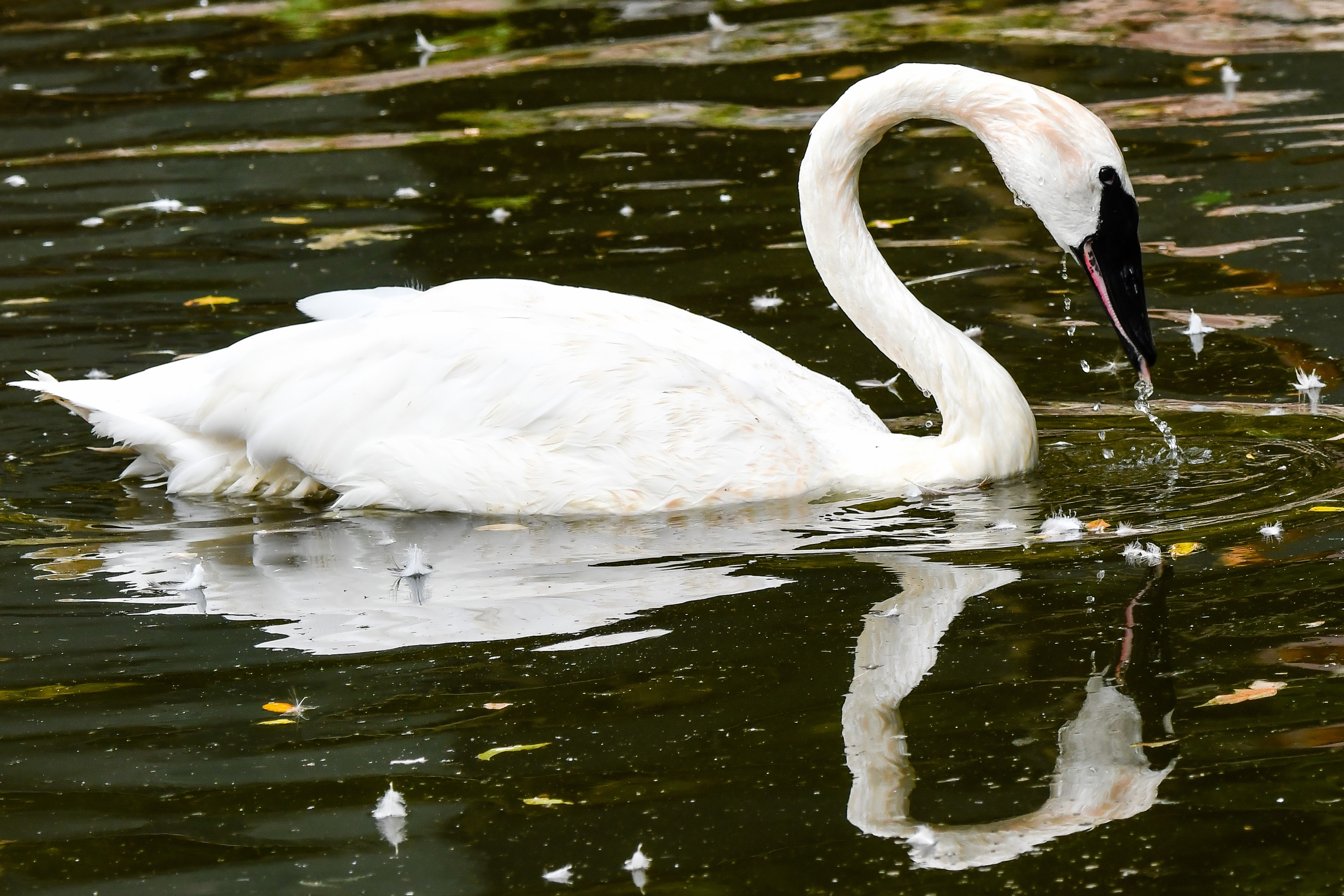* Threatened or Endangered

Trumpeter Swan *
: Cygnus buccinator
: Bird
: Northwestern and central North America
: Plant material and grains
: Weight 22 to 38 lbs.
: Least Concern
• Once numerous across the central and western United States, trumpeter swans were heavily hunted in the late 1800s and early 1900s.
• Efforts to reintroduce birds to areas where they were previously located have had limited success due to the lack of migration patterns present in the reintroduced birds.
• This is the largest bird in North America and the overall largest waterfowl in the world.
• It can be distinguished from its smaller relative, the Whistling Swan, by its considerably larger size and the lack of yellow lores at the base of the beak.
• Like all swans, adults go through a summer molt when they temporarily lose their flight feathers.
o In adult females, this happens shortly after their young hatch.
o In adult males, it happens when the females have regained their ability to fly.
Respect native wildlife by remembering that…it’s wild! When enjoying native land where wildlife lives, always be aware, be safe, and leave no trace. Never approach, taunt, or feed wildlife. Interacting with them can be dangerous to you and to them. Instead, enjoy their beauty and their ecosystem without disturbing them. To learn more, follow these links:
gf.nd.gov/wildlife/orphaned
www.nationalparks.org/connect/blog/tips-safely-visiting-national-parks
